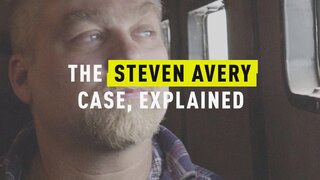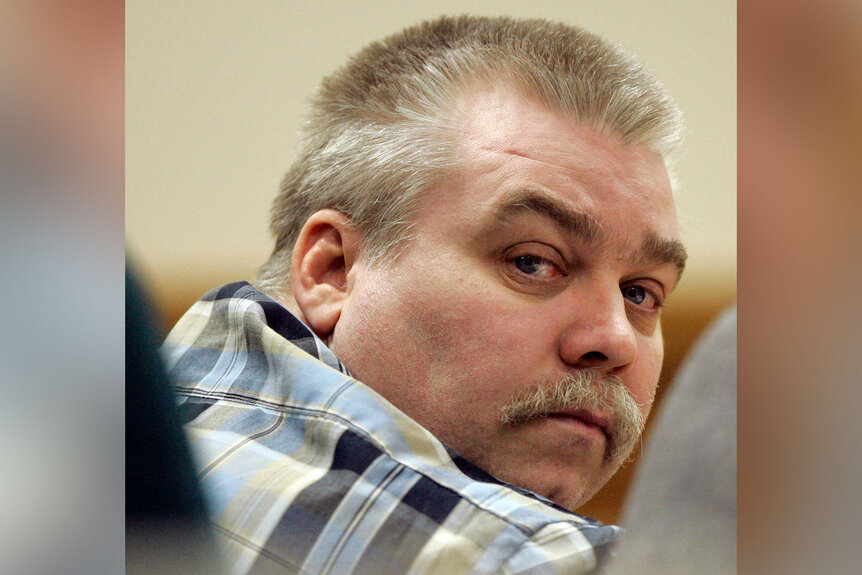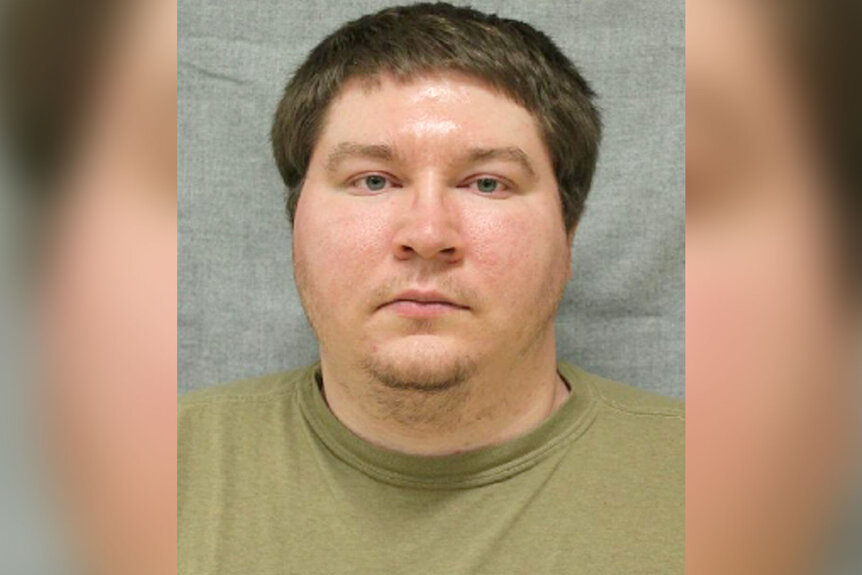Create a free profile to get unlimited access to exclusive videos, breaking news, sweepstakes, and more!
Who Really Killed Teresa Halbach? Dateline Dives into the Controversial Steven Avery Case
Its been more than 15 years since Teresa Halbach disappeared on a photography assignment for Auto Trader Magazine, but some still question the convictions of the two men found responsible for her murder.
It’s one of the most disputed murder cases in recent history.
Did Steven Avery and his nephew Brendan Dassey murder 25-year-old photographer Teresa Halbach on their sprawling Wisconsin property like they were convicted of doing more than 15 years ago? Or were they framed by authorities to take the wrap for a murder they never committed?
It’s a question that has continued to linger since the 2015 Netflix hit documentary Making a Murderer drew the case into question. But they weren’t the first to look into the controversial case.
“The Netflix documentary Making a Murderer convinced many that Steven Avery and Brendan Dassey, both convicted in her death, had been railroaded by law enforcement,” Dateline correspondent Andrea Canning said in Dateline: Unforgettable. “Dateline was following the case for nearly a decade before it became a Netflix phenomenon. I even covered elements of the case before I joined the Dateline team.”
Canning and the Dateline team “dug even deeper” in an update to the case that had both sides facing off as the search for the truth continues.
The Case Against Steven Avery
Halbach disappeared on October 31, 2005 while on an assignment for Auto Trader Magazine. She was planning to take photos of a van Avery’s sister was selling at the Avery salvage yard on their sprawling 40-acre property in Manitowoc County. Halbach left a message that morning saying she planned to be at the property around 2 p.m. that day.
RELATED: Graduate Student's Fatal Shooting Reveals A Secret Affair, But Who Is The Killer?
Avery confirmed she had been on the property, but said she left around 2:30 p.m.
Two days after she disappeared, her Toyota RAV 4 SUV was found tucked away at the salvage yard, with some disturbing clues inside.
“We find Teresa’s blood in the vehicle, primarily in the cargo area of the Rav 4,” said Tom Fassbender, then a special agent with the Wisconsin Department of Criminal Investigation.
Her blood was also found on the upholstery of the front seat and a “telling swipe of blood” later determined to be from Avery was found near the ignition switch of the vehicle, Fassbender said.
Investigators also found human bone fragments in a fire pit near Avery’s trailer. Family members said they had seen Avery building a bonfire just hours after Halbach was seen on the property.
“It was a huge bonfire, flames going as high as you know, the edge of the roof on the garage,” Fassbender said.
Halbach’s SUV key was also found inside Avery’s trailer in the bedroom near a small bookcase.
What was Steven Avery’s Nephew Brendan Dassey's role?
Adding to the evidence against Avery, was the confession made by his nephew Brendan Dassey. During a police interrogation, Dassey — then just 16 years old — told authorities that he and Avery raped Halbach, before Avery shot her to death in the garage and disposed of her body in the fire pit.
After speaking with Dassey, authorities returned to the garage where they found a bullet fragment that had been “missed” in initial searches, but oddly no blood was ever found in the garage.
Dassey’s confession would later come under scrutiny after questions arose about whether authorities should have questioned the mentally challenged teen without an attorney or parent present. Just moments after the interrogation, video footage also shows Dassey telling his mom he “never did nothin’” and that investigators “got to my head.”
He later recanted his confession.
Critics have also alleged that authorities planted details about the crime into Dassey’s head. For example, in one exchange, Fassbender and his colleague asked Dassey to tell them what happened to Halbach's head.
Dassey initially claimed after continuous probing that Avery “cut off her hair,” “punched her,” and “cut her.”
“What else happens to her – in her head?” Detective Mark Wiegert asked.
“Extremely, extremely important you tell us this — for us to believe you,” Fassbender added.
Dassey insists that’s “all I can remember,” but the investigators didn’t stop there.
“All right, I’m just gonna come out and ask you, who shot her in the head?” Wiegert asked.
Finally, Dassey told them it had been Avery.
“Those officers wanted that information in the worst way and they got it in the worst way, by feeding it straight to Brendan Dassey,” attorney Laura Nirider, who later took on Dassey’s case, told Canning.
Fassbender has denied any wrongdoing and said while there may have been things investigators could have improved on during the interrogation, he believes it was a real confession.
“We didn’t try to manipulate Brendan,” he said. “We tried to get at the truth and I don’t believe that it was a false confession. Are there parts of it that he may have not done? I don’t know.”
Other Questions About Steven Avery’s Case
Avery wasn’t just any suspect. At the time of Halbach’s murder, Avery had lodged a $36 million lawsuit against the Manitowoc County Sheriff’s Office for a wrongful conviction. He was convicted of rape in 1985 and spent 18 years behind bars before DNA cleared him of the crime.
Some of Avery’s supporters have alleged that the sheriff’s office planted evidence against Avery in Halbach’s case to avoid paying a hefty legal settlement.
RELATED: Former Texas Police Chief Shoots Wife's Ex, New Girlfriend in Front of 4-Year-Old Son
“Something just told me they weren’t gonna hand Steve Avery $36 million or any kind of money,” his cousin Kim Ducat said. “They were just going to be watching him and look what happened.”
It was the same theory embraced by Avery’s defense attorneys Dean Strang and Jerry Buting.
“We had a very tough defense in this case because nobody wants to try and use as a defense that the police deliberately tried to plant evidence or frame people,” Buting said. “But it’s where we thought the evidence pointed.”
For instance, they discovered that an old vial of Avery’s blood from his 1985 case was being stored in a small styrofoam container. When they found the container, however, the evidence tape had been cut and a small hole was found in the cap of vial, they alleged, suggesting to them that someone may have used a syringe to extract some of Avery’s blood to plant in Halbach’s SUV.
They also questioned the discovery of Halbach’s car key in Avery’s home. It wasn’t discovered until the sixth or seventh search of the small camper. When it was found, it was discovered by two investigators with the Manitowoc County Sheriff’s Office who had just been deposed in Avery's pending lawsuit.
Fassbender insisted, however, that no one connected to the investigation had a vendetta against Avery.
“The people that were there that I worked with from Manitowoc County were hard-working,” he said. “They only wanted to do the right thing and do this investigation the right way.”
Was Steven Avery Convicted?
Despite the questions surrounding the case, both Avery and Dassey were convicted of the killing in separate trials in 2007. They were both sentenced to life behind bars.
The controversial case soon earned national attention, however, in 2015 when the hugely successful Netflix documentary Making a Murderer was released.
A year later, a federal judge ruled that Dassey’s confession had been involuntary and overturned his conviction. However, the Wisconsin Attorney General appealed the judge’s order and a full panel of federal judges later ruled that the confession had been voluntary. As a result, Dassey’s conviction was upheld.
As for Avery, high-powered attorney Kathleen Zellner, a specialist in wrongful conviction cases, has taken on his case and is determined to prove Avery was “framed for a crime he did not commit.”
“We will be able to demonstrate exactly how the evidence was planted in the early part of the investigation,” she told Dateline: Unforgettable in a statement.
Zellner has also said she found evidence that Halbach’s phone pinged off a tower 13 miles away from the salvage yard that afternoon, suggesting she may have left the property before she fell into harm’s way.
Avery’s latest bid for a new trial was denied earlier this year, according to Wisconsin station WLUK.




































